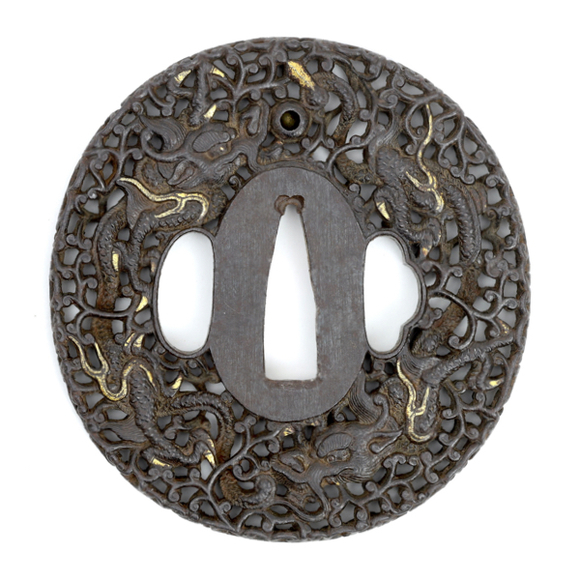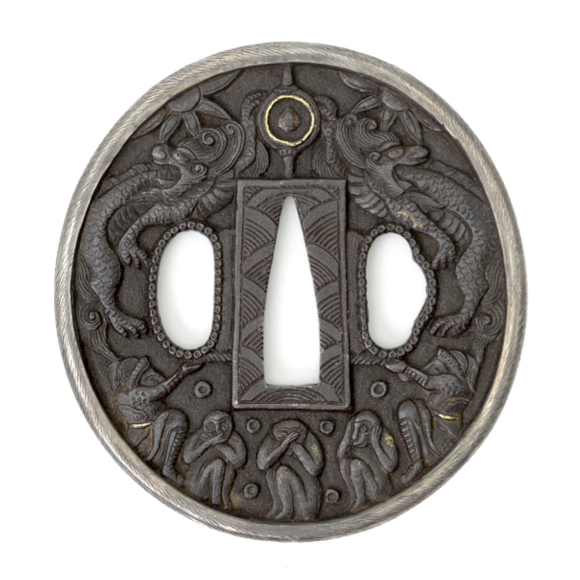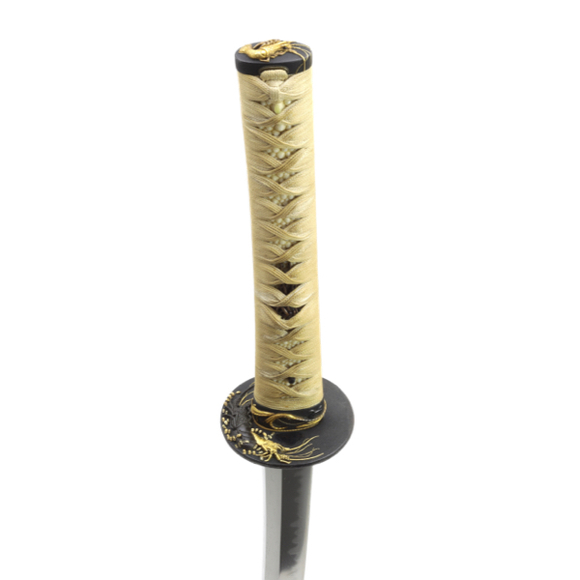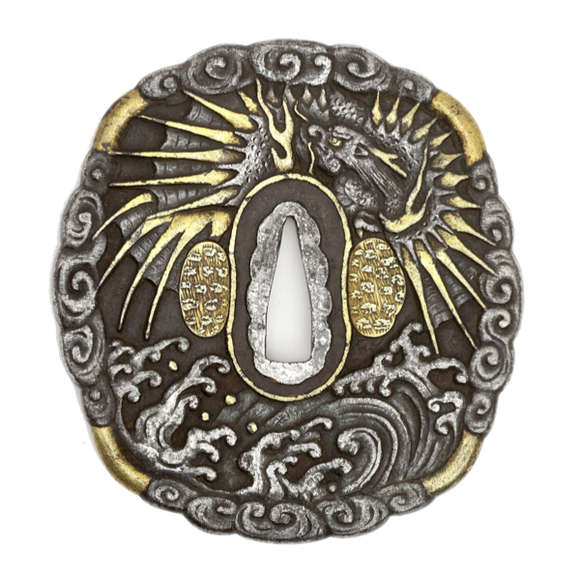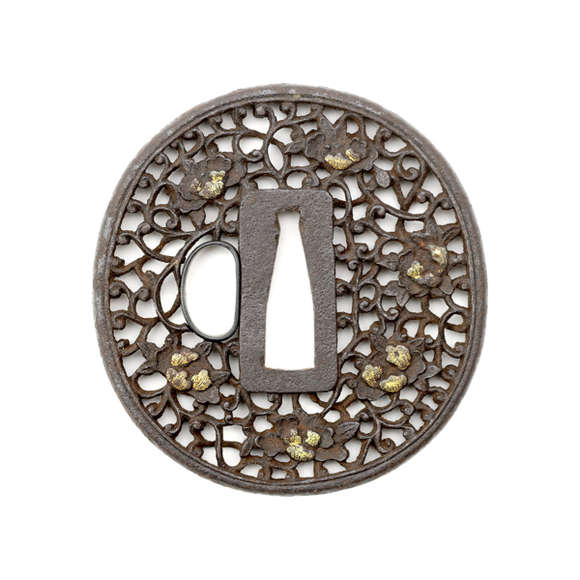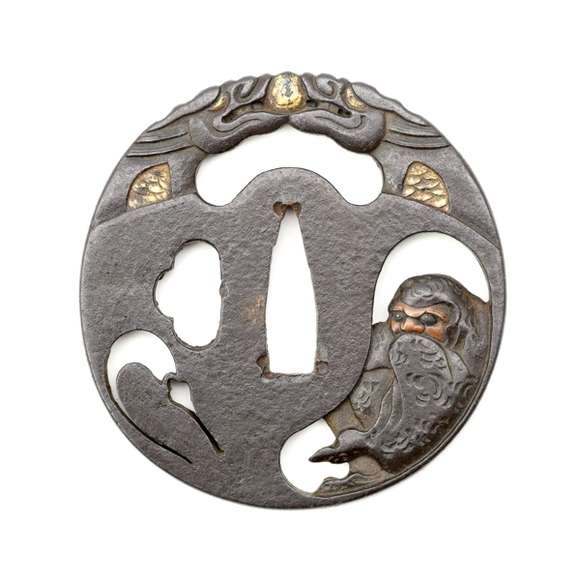The Yagami school were excellent carvers of iron, known for their 1000 monkey designs.
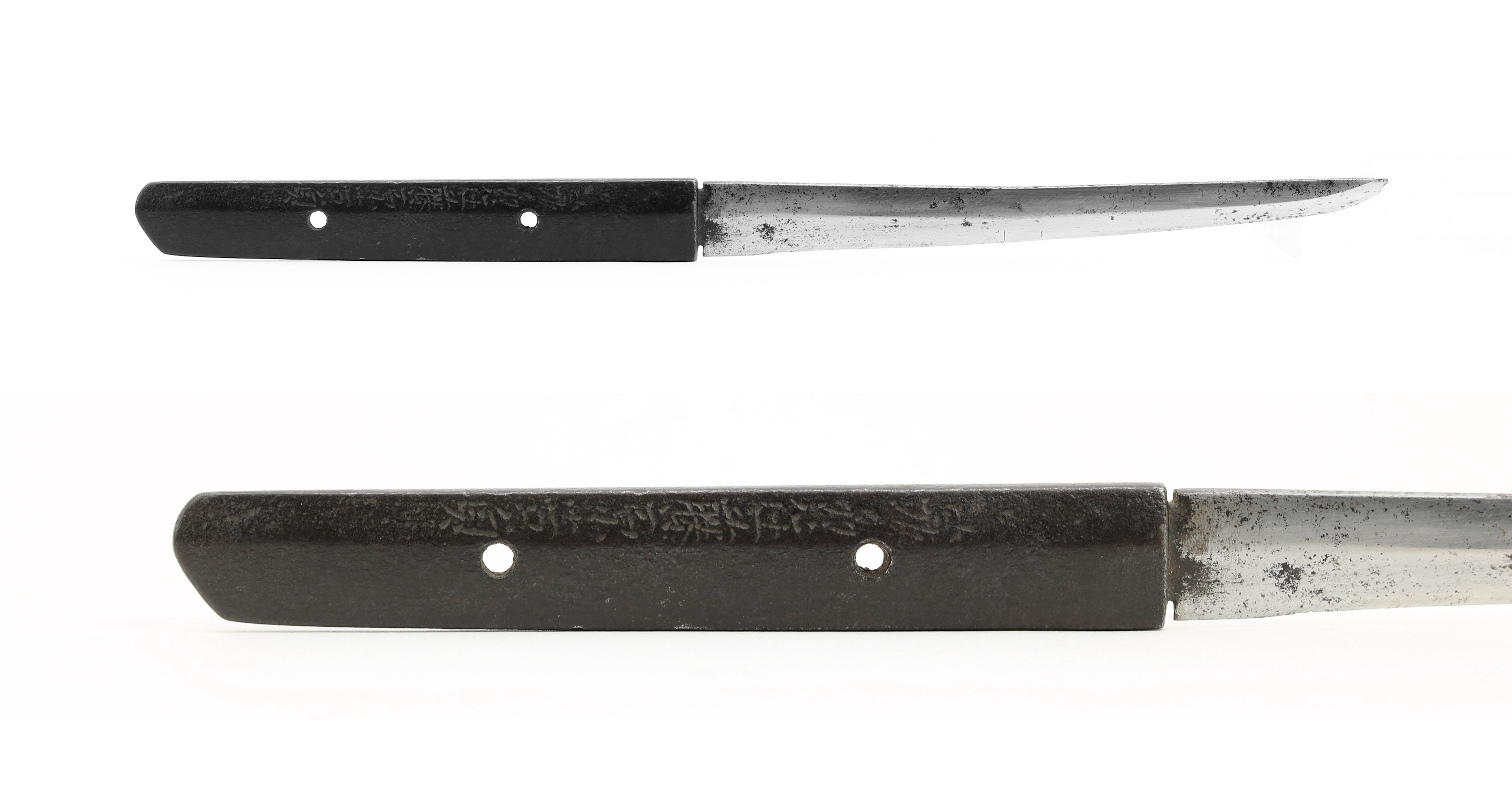
21.4 cm
11.7 cm
Iron, steel.
53 grams
Japan
Circa 1700
Bought from Japan
Introduction
The kozuka (小柄) refers to the handle of a small utility knife that is carried in the scabbard of Japanese swords and daggers. It was used for whatever the main blade was too big or too precious for. The whole knife is called kogatana (小刀), but in collector's circles the whole is often called kozuka. Like with Japanese sword guards, tsuba, there is quite a collecting culture around the handles alone.
This example
A quirky variety of a kozuka that is shaped like a miniature, out of proportion unmounted katana. The blade with more of a curvature than usually is the case, an a pronounced ridgeline (shinogi) in about the center of the blade on the right side. The left side remains flat ground.
It is made in a one-piece construction with the handle, which in turn is shaped like a nakago, the Japanese sword tang. It has two peg-holes called mekugi-ana that on an actual sword would take pegs to fix it to the hilt.
The nakago is signed, like many sword tangs would be. It says:
駿州住藤原吉貞
Sunshū jū Fujiwara Yoshisada
Sunshū jū is an abbreviated way of writing Suruga Province (駿河国) Suruga no kuni.
Fujiwara is a clan name, sometimes quite freely used.
Yoshisada is the smith's name.
Attribution
There is a smith listed in Hawley's Japanese Sword Smiths, entry YOS 754, who came from Sunshū and signed with Fujiwara Yoshisada. He was active around 1700. This is most likely our guy.
Signatures on Japanese arms are often gimei, false signatures, often done as a hommage to a certain smith or in worse cases to plainly fool a buyer. The smith on the kogatana however is so obscure, that we are most likely dealing with work from the actual person. The false signatures tend to be of much bigger names.
Condition
Hilt in great condition, much like any sword tang of that period. The blade has a chip near the tip and two stress cracks in the edge. It is in old polish and only vaguely shows a hamon, but it's there, just like on a sword.
Conclusion
A charming old kogatana with a handle shaped like a sword's nakago, including signature of a smith who was active around 1700.

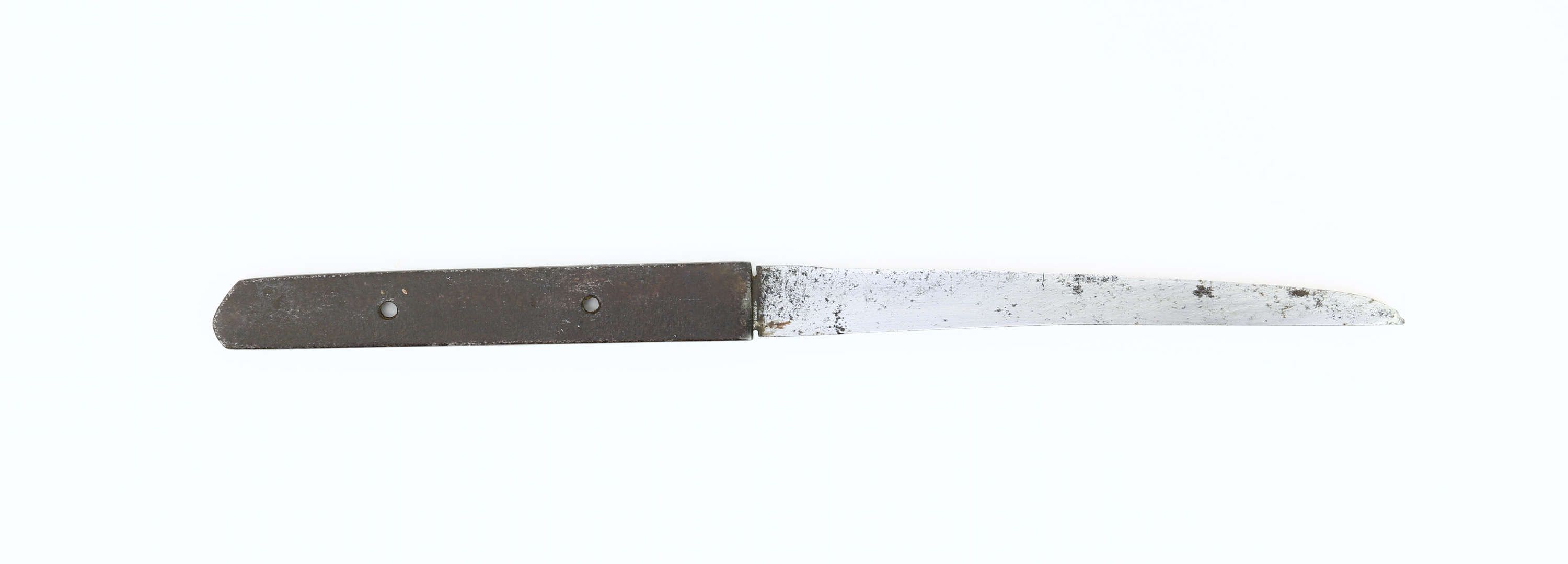
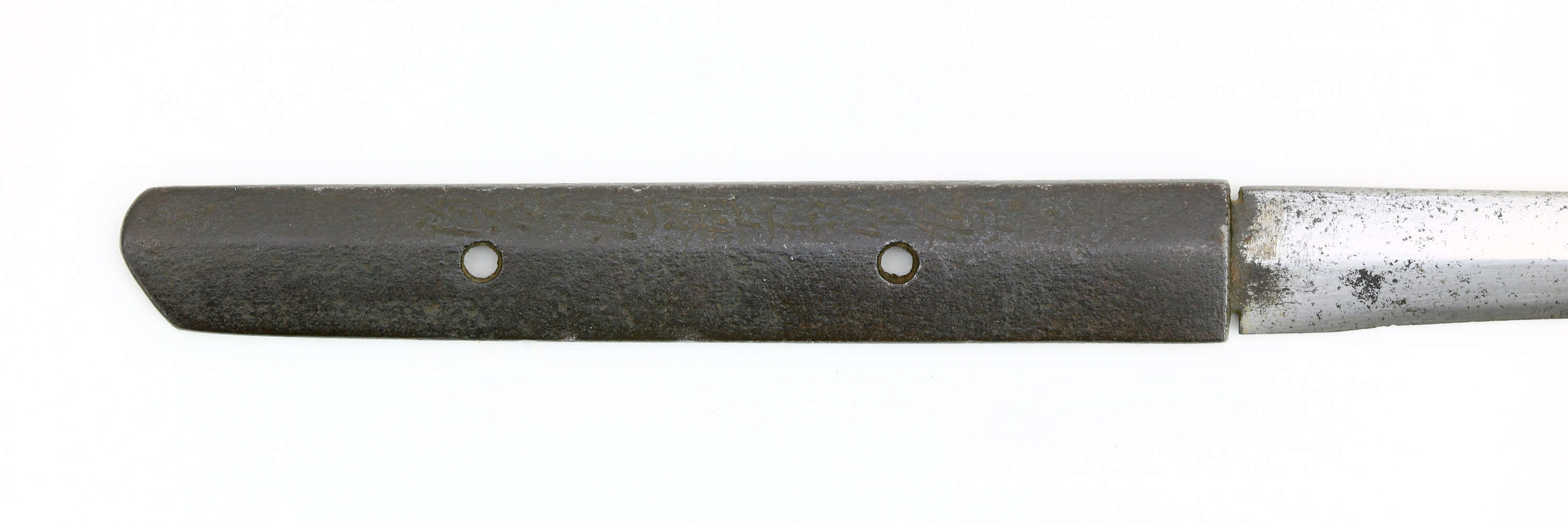


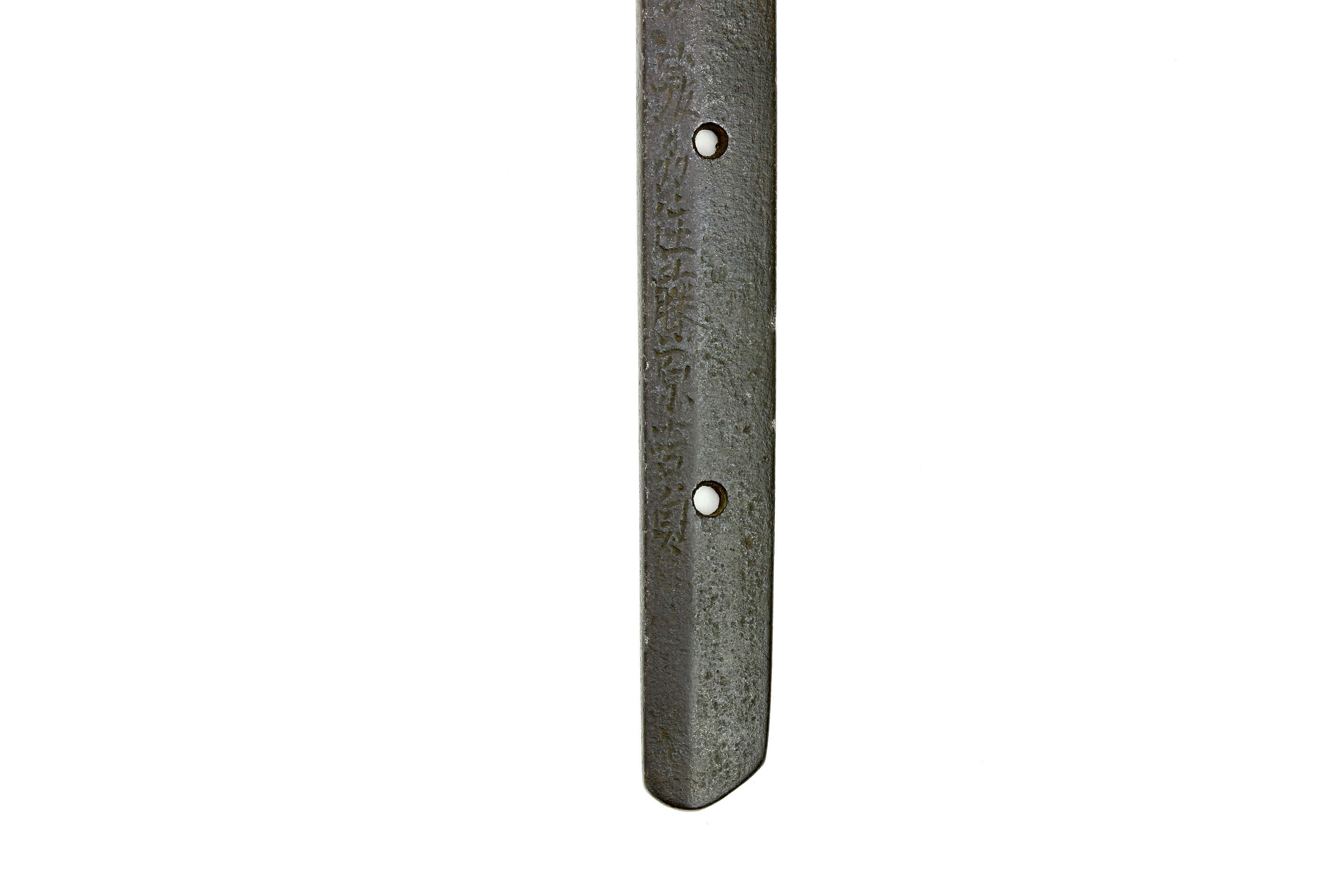
Japanese sword guard depicting three wise monkeys conveying the message see no evil, hear no evil, speak no…
The very detailed mountings are decorated with designs of Japanese spiny lobsters.
Executed in "nanban style" openwork with chiseled and gold-encrusted peonies.
A peculiar tsuba with a depiction of Bodhidharma and two dragon chasing a pearl.

